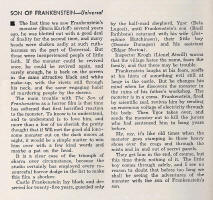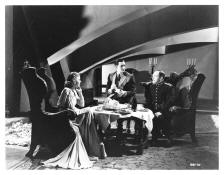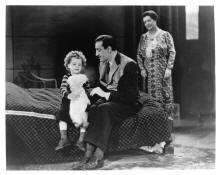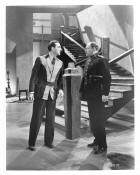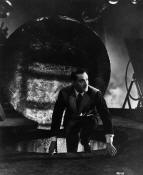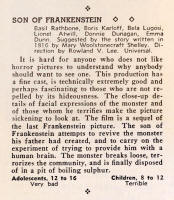Son
of Frankenstein
|
|||||||||||||||||||||||||||||||||||||||||||||
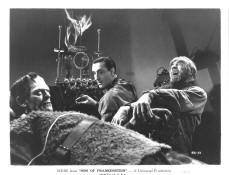 Wolf tries to bring the monster to life. |
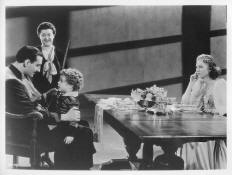 photo by Emma Dunn |
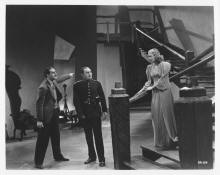 Inspector Krogh visits the castle. |
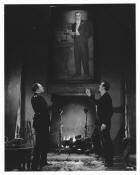 Frankenstein shows Inspector Krogh the painting of his father. |
"Basil Rathbone, confronted with the season's most improbable and unsympathetic role, plays it manfully, omitting none of the nervous frenzies and emotional tension suitable to the character." Boston Herald, January 14, 1939
"Rathbone, always a fine actor, does a fine job of the scientist." "Frankenstein Monster Horrible as Ever," Dallas Morning News, January 15, 1945
"Good cast makes this wild Frankenstein tale plausible enough to hold
your interest while you are in the theater. ... Basil Rathbone plays the
title role with conviction and honesty."
W. Ward Marsh, Cleveland Plain Dealer, January 16, 1939
"Universal hereby offers a brand new picture for 1939 release that will chill and thrill audiences, and speak through that universal language, Fear. It's a knockout of its type for production, acting and effects and if the revivals may still be used as a boxoffice index, this 'Son of Frankenstein' will have no difficulty drawing victims to its mawthe boxoffice." Hollywood Reporter
Theater owner comments:
"For my trade horror pictures went out of style with the Model T Fords. Our 50 customers were more afraid of being in the theatre with so little company than the picture." Frank Glenn, Renel Theatre, Philadelphia, PA (Box Office, May 27, 1939)
"We played this three months after 'Frankenstein' and 'Dracula' and now wish we'd passed it up. Unquestionably the finest in its class, but few people like to pay good money to have the h scared out of them." Victor Mantz, New Ogden Theatre, Ogden, IA (Box Office, June 17, 1939)
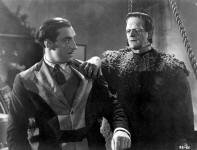 Uh-oh. |
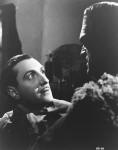 Frankenstein meets the monster. |
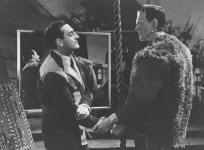 |
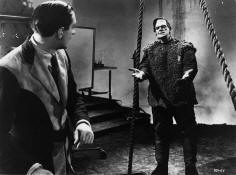 The monster seems to appeal to Frankenstein to help him. |
"This did the best midweek business since 'Boys Town,' which proves that people will go out in spite of conditions if they really want to see a picture. We advertised it was not for those who frightened easily or had weak hearts." C.V. Martina, Rialto Theatre, Albion, NY (Box Office, March 25, 1939)
"A very fine show of its kind. Excellent story, cast and direction. Will please all thrill seekers. Business good." C.L. Niles, Niles Theatre, Anamosa, IA (Motion Picture Herald, February 25, 1939)
"Here's a winner held over in spots and entertains all the way." W.E. McPhee, Strand Theatre, Old Town, ME (Motion Picture Herald, March 4, 1939)
"Good. But misses the initial thrill that 'the monster' gave to audiences in the first and original 'Frankenstein.' Rathbone overacted a little. 'Ygor' is a refreshing touch to the monster-loving audiences." W.C. Lewellen, Uptown Theatre, Pueblo, CO (Motion Picture Herald, April 1, 1939)
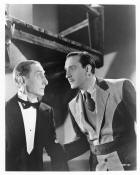 "It's alive!" |
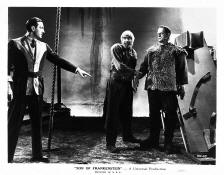 |
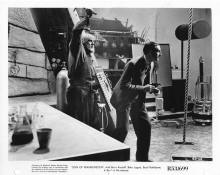 Ygor tries to kill Frankenstein. |
|
"Did pretty good at the box office. Pleased everybody except the ones who had seen 'Frankenstein.' Know of one girl who had a severe nightmare." E.A. Slaybaugh, Park Theatre, Mountain Park, OK (Motion Picture Herald, May 13, 1939)
The press book for Son of Frankenstein included this item:
Rathbone Demands Accurate Costumes
Clothes may not make the man, but correct wardrobe is imperative to the realism of an actor's performance on the screen. Basil Rathbone, a stickler for authenticity of film costumes, subscribes heartily to that policy. A search through every Hollywood costume house failed to disclose a Bavarian cape required for Rathbone's portrayal of the title role in Son of Frankenstein. Rathbone himself sent cables to friends in Europe but found that the cape would not arrive before production started. Finally he telephoned a friend in New York, Julius Paul Meyer, former president of a leading steamship line. Next day a genuine Bavarian cape loaned to Rathbone for the duration of the film, arrived in Hollywood via air mail from Meyer.
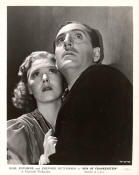 Because of the danger of the monster, Wolf plans to send his wife and child away. |
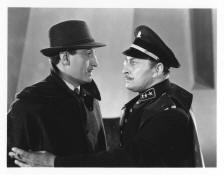 Krogh tells Frankenstein that a mob of villagers are outside the castle. |
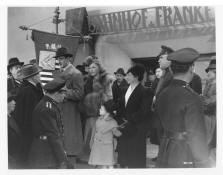 The villagers are happy to see the Frankenstein family leaving. |
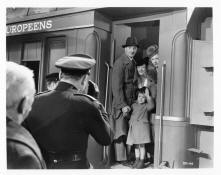 Inspector Krogh also bids them farewell. |
Turner Classic Movies has four video clips from Son of Frankenstein:
www.tcm.com/tcmdb/title/90804/son-of-frankenstein#photos-videos
SON OF FRANKENSTEIN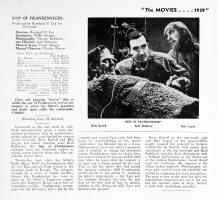 Grim and gripping "horror" film in which the son of Frankenstein revives the monster to prove his father's greatness and death again stalks the countryside. (Adults) Conceived as the last word in chill-thrill melodramatics, given a more pretentious production than its predecessors, grimly played by a cast headed by veteran screen terrorists, Boris Karloff and Bela Lugosi, and mast character actor Basil Rathbone, the Son of Frankenstein emerges from the Universal studios as strong screen fare for those who like out-and-out horror films. Twenty-five years after his father's death, Baron Wolf von Frankenstein with his wife Elsa and son Peter returns to the ancestral castle in Europe. The villagers, aroused by a series of brutal murders, believe that Frankenstein has come to carry on his father's dangerous experiments and Inspector Krogh warns him of impending trouble. Frankenstein investigates the old laboratory and is led by the crippled and crazed Ygor, who had been hung for grave-robbing, to the family crypt where the Monster lies in a coma. Determined to prove his father's greatness and, if possible, to change the monster's nature, Frankenstein tries to revive him, but does not know he has succeeded until later when he learns that the monster is at large and is being guided by the mad Ygor to kill the jurors who had passed the hanging sentence. Still Frankenstein would persist in his efforts to vindicate his father's experimentsbut Ygor and the monster threaten his own life and that of his boy and at last, as tension tightens to the climax, he kills Ygor and destroys the monster. Boris Karloff as the man-made ogre and Bela Lugosi as the grave-robber, legally hanged but restored to broken-necked life by Karloff, fully justify their reputations as the top terrorists and Basil Rathbone matches then throughout with a brilliant performance as the doctor-son of the original Frankenstein. Lionel Atwill leads the uniformly able support as the village police inspector. Photography, settings and musical score are carefully calculated to emphasize the eerie atmosphere. The pace is slow at the start but after the introductory sequences are out of the way and the monster again at large, interest is held with unrelenting grimness. Movies and the People Who Make Them, 1939 |
Enjoy these promotional portraits of Basil Rathbone as Dr. Frankenstein, as well as several candid photos taken on the set of Son of Frankenstein:
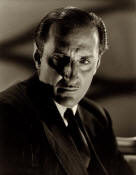 |
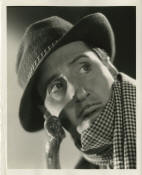 |
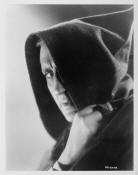 |
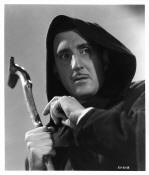 |
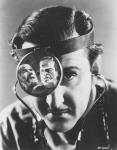 |
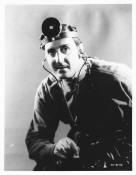 |
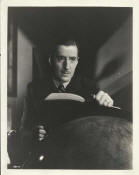 |
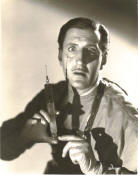 |
| Some candid photos from the set of Son of Frankenstein | |
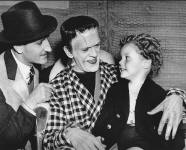 Rathbone, Karloff, and Donnie Dunagan |
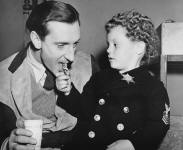 Rathbone and Donnie Dunagan |
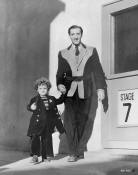 Rathbone and Donnie Dunagan |
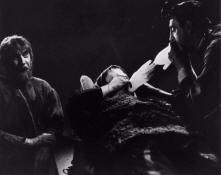 Lugosi, Karloff and Rathbone goofing around with rubber gloves. |
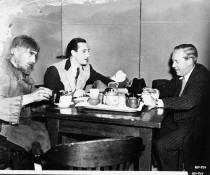 Lugosi, Rathbone, and Director Rowland Lee |
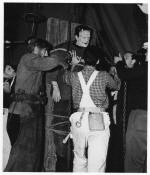 Part of Basil's face can be seen on the right. |
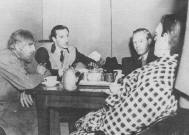 Bela Lugosi, Rathbone and Boris Karloff having a conference with director Rowland Lee |
 Lionel Atwill, Josephine Hutchinson and Basil Rathbone |
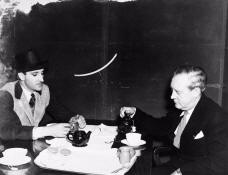 Rathbone with director Rowland Lee |
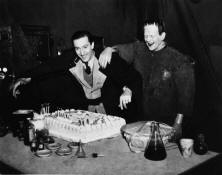 Celebrating Boris Karloff's birthday |
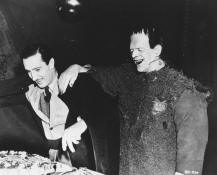 Rathbone and Boris Karloff |
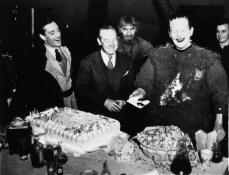 Celebrating Boris Karloff's birthday |
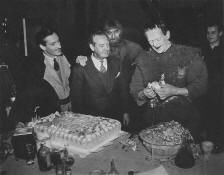 Basil Rathbone, director Rowland Lee, Bela Lugosi and Boris Karloff |
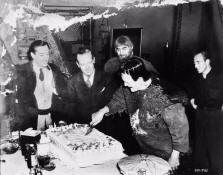 Celebrating Boris Karloff's birthday |
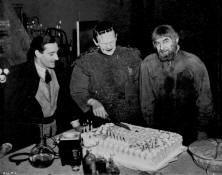 Celebrating Boris Karloff's birthday |
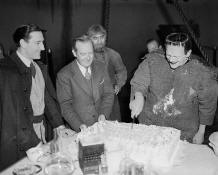 Celebrating Boris Karloff's birthday |
|
Celebrating Boris Karloff's birthday |
Celebrating Boris Karloff's birthday |
Go to Page Three for pictures of posters and lobby cards.







